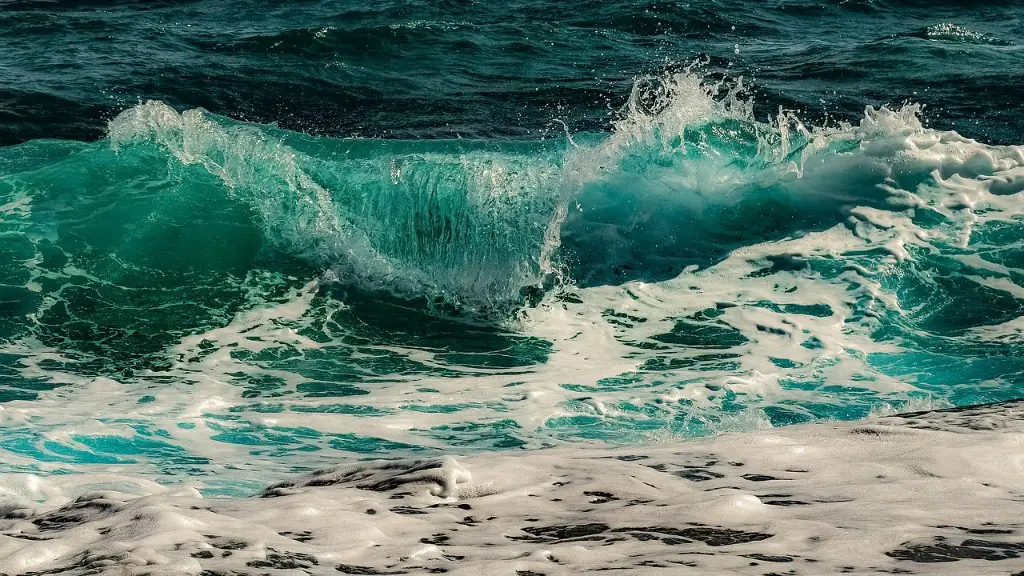Species of Sharks in The South China Sea
The South China Sea is home to a variety of different species of sharks. There are six species of sharks that live in the South China Sea: the Tiger Shark, the Bull Shark, the Whitetip Reef Shark, the Hammerhead Shark, the Spinner Shark, and the Blacktip Shark. These sharks are found at different depths and in different areas of the Sea, depending on their preferred habitat and unique traits.
The Tiger Shark is one of the largest species of shark in the South China Sea. It can grow up to 16 feet in length and weigh up to 1,300 pounds. It is a known predator of sea life and has a reputation for being a ‘rogue’ shark, which is why it is considered a potential danger to swimmers and divers.
The Bull Shark is one of the most feared species of shark in the South China Sea. It has a reputation for being fearless and aggressive, and it is often seen at the surface of the water. Bull Sharks are usually found in coastal areas of the South China Sea, where they feed on a variety of fish and other sea life.
The Whitetip Reef Shark is one of the smallest species of sharks in the South China Sea. These sharks usually grow to a maximum of 3 feet long and weigh up to 55 pounds. They are usually found near coral reefs, where they feed on small fish and invertebrates.
The Hammerhead Shark is one of the most iconic species of shark in the South China Sea. This type of shark is easily recognizable by its unique head shape, which gives it an impressive field of view and an ability to scan the sea floor for food. It typically grows to lengths of 12 feet and can weigh up to 500 pounds.
The Spinner Shark is a medium-sized species of shark found in the South China Sea. These sharks typically grow to lengths of 6 feet and weigh up to 300 pounds. They are often seen spinning around in the water and leaping out of the water.
The Blacktip Shark is one of the most common species of shark in the South China Sea. It usually grows to lengths of 8 feet and weighs up to 250 pounds. It is generally found in waters further out from the shore, in depths of up to 200 meters.
Habitats and Behavior
Sharks prefer to inhabit waters that provide the right combination of temperature and salinity levels. The South China Sea is an ideal habitat for sharks, as it offers the right conditions and a wide variety of sea life that can serve as food sources. Many species of shark also prefer to inhabit coral reefs, which provide them with shelter and hiding spots from potential predators.
The behavior of different species of sharks in the South China Sea varies. Tiger Sharks, for example, are considered to be solitary hunters and are most active at night. Bull Sharks, on the other hand, are known for their aggressiveness and are often seen in large groups. Whitetip Reef Sharks, Hammerhead Sharks, and Spinner Sharks, prefer to hunt for food in reefs and shallow waters. Blacktip Sharks often hunt in deeper waters, further away from the shore.
Threats and Conservation
Sharks are an important part of the marine ecosystem, yet they face a variety of threats in the South China Sea. Overfishing is one of the most pressing problems, as it has led to a decline in the shark population in the region.
Additionally, the South China Sea is a highly industrialized area, where a variety of vessels and fishing boats operate. This means that there is increased risk of sharks getting caught in fishing nets and other marine debris. Habitat destruction is also a concern, as several areas have been drastically damaged due to human activities.
Various conservation steps have been taken over the years to protect sharks in the South China Sea, such as establishing Marine Protected Areas and imposing fishing restrictions in certain areas. However, these measures have been criticized for being insufficient and ineffective.
Are Sharks in South China Sea dangerous?
The risk of shark attacks in the South China Sea is low. However, it is important to bear in mind that there are certain species of sharks that are considered to be potentially dangerous. These include the Tiger Shark, the Bull Shark, the Hammerhead Shark, and the Blacktip Shark.
It is important for swimmers and divers to take precautions when entering the water, such as avoiding areas where sharks are known to frequent, avoiding dawn and dusk, avoiding murky waters, and refraining from splashing and making sudden movements.
Relevant Projects and Research
In recent years, a variety of projects and research have been conducted in order to gain a better understanding of sharks in the South China Sea. One of the most noteworthy projects has been the Shark Hotspot program, which collected data on the number and location of sharks in the region.
In addition, a variety of studies have been conducted in order to gain insights into the ecology and behavior of different species of sharks in the South China Sea, such as their foraging patterns, hunting tactics, and social organization.
Opinions from Experts
There is considerable debate among experts over the state of sharks in the South China Sea. According to some experts, the shark population is highly endangered and is in need of urgent protection. Others, however, say that the population is stable and that existing conservation efforts are sufficient.
One thing experts can agree on is that the South China Sea is a crucial habitat for sharks and needs to be protected from human activity and overexploitation.
Can We Protect Sharks in South China Sea?
The best way to protect sharks in the South China Sea is through a combination of conservation efforts and regulations. This includes implementing more stringent fishing regulations, creating Marine Protected Areas, and increasing public awareness of the importance of sharks.
Additionally, it is important to reduce the demand for shark-related products, such as shark fin soup and other shark-based products. This can be done through education and campaigning, as well as through regulations that limit the amount of shark products that can be sold and consumed.
Actions Taken by Local Communities
Local communities in the South China Sea are also taking action to protect sharks. For example, in Indonesia, fishermen are using fishing gear that is designed to reduce the number of sharks that get caught in fishing nets. In addition, local communities are creating Marine Sanctuaries where sharks are protected from human activity.
These initiatives are helping to improve the conservation of sharks in the South China Sea, but more needs to be done in order to protect shark populations from extinction.


